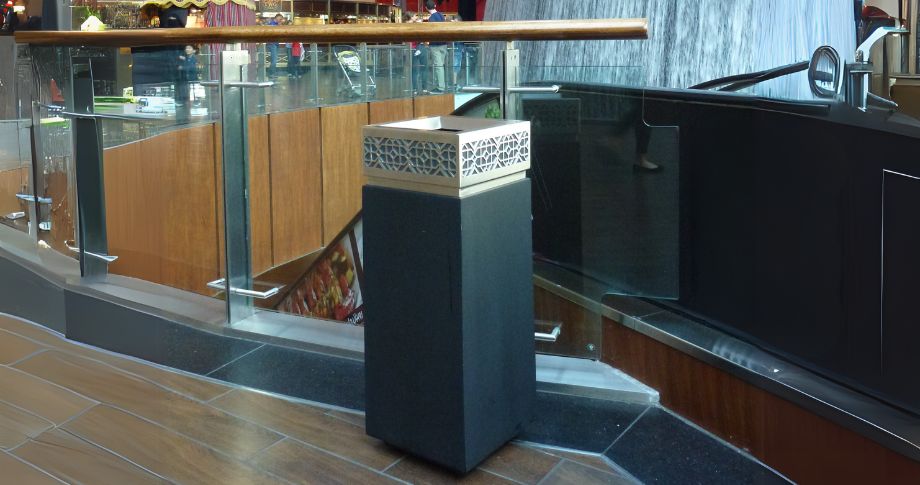
Recycling bins are usually the last element anyone thinks about when furnishing a new office or planning a redesign — often treated like an afterthought, if they’re considered at all. But in today’s world, where we’re all being pushed to take more responsibility for how we manage waste, recycling bins should be front and centre.
They’re not just functional. They’re the first step in efficient waste management — and a clear reflection of your property’s values. So where do you begin?
Here are five key things to think about before investing in recycling bins for your commercial space:
1. Waste Volume & Frequency
Start with the basics: how much waste does your space generate, and how often is it collected? A retail mall, hotel or airport has vastly different needs compared to a small office. Choosing the right size and number of bins helps avoid overflow, reduces maintenance, and ensures your space stays clean and efficient.
2. Type of Waste
What are you collecting? Paper, plastic, food waste, cans? Your bin choice should suit the waste type. The shape of the aperture, the inner liner material, and even the ventilation (for organic waste) all need to align with what you’re disposing of. Clear labels and colour-coding also go a long way in encouraging correct usage and meeting recycling guidelines.
3. Placement & Purpose of Recycling Bins
A recycling bin is one of those things that should blend in when you don’t need it — but be instantly findable when you do. Indoor or outdoor? Public-facing or back-of-house? In corridors, lobbies, or food areas? Placement impacts not just design and accessibility, but also durability and user behaviour. Bins for high-traffic zones need to be intuitive and easy to spot, with clear messaging and minimal touchpoints.
4. Recycling Bins Material & Durability
Bins take a lot of wear — daily use, cleaning, movement, and in some cases, outdoor exposure. Material matters. Stainless steel, powder-coated metal, durable polymers — each has its place. At POWER Bear, we help you choose the right material based on where the bin will be placed, how it’ll be used, and the image you want to convey. We also offer custom options if you have specific needs.
5. Design, Branding & User Experience of Recycling Bins
Just because it’s a bin doesn’t mean it should look like one. Good design doesn’t just elevate the space — it drives better waste behaviour. Think about the finishes, proportions, signage, and whether you want to incorporate your branding. The best bins quietly reinforce your sustainability goals, match your interiors, and make waste disposal feel like a seamless part of the experience.
Final Thoughts
Recycling bins may be one of the most-used elements in your space — but they’re rarely given the attention they deserve. Getting them right means thinking beyond just “where do we throw this away?” It’s about sending a message: that you care about sustainability, aesthetics, and the experience of the people using your space.
Explore our collection of designer recycling bins built for commercial properties at
powerbeardesignerbins.com

